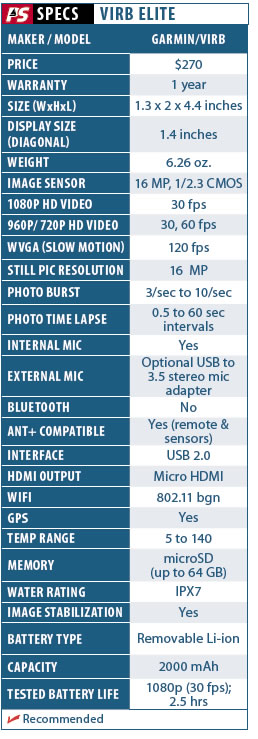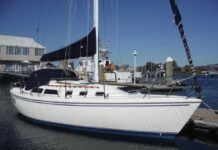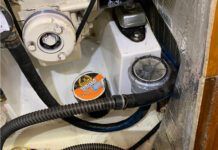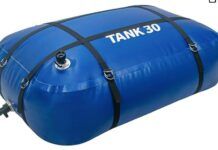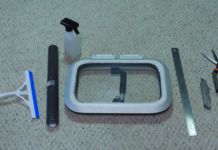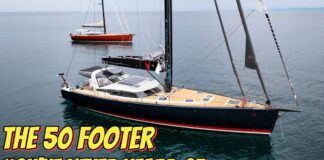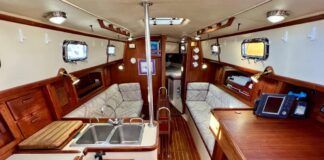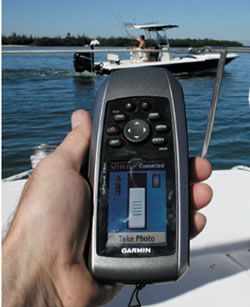
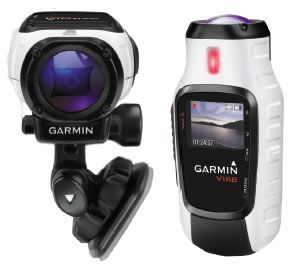
There are a handful of popular action cameras on the market, which is dominated by the now ubiquitous GoPro line. Weve purposely steered clear of this fast-moving field, one that is widely covered in consumer electronics magazines and websites. However, since Garmins new entry in this market, the VIRB Elite, incorporates features aimed specifically at boaters, we thought wed check it out.
Techies can drop in on any online review or the Garmin website to get a complete rundown of the cameras features and specs (see accompanying table). Our field tests focused on the following.
Ruggedness: Garmin has been building handheld electronics longer than anyone in the remote camera field. We wondered whether they took this opportunity to outshine the competition.
Image quality: What good is a camera if the image stinks?
Utility: Garmins strength is navigation. What does the combination of visual imagery, GPS positioning, and an accelerometer bring to the table?
In terms of ruggedness, we were very impressed with Garmin VIRB Elite. After surviving multiple 3-foot drops onto a fiberglass deck, the VIRB showed no scratches-not even on the replaceable lens cover. The lens fogged only once during testing: when we went from steamy indoors to dry, 13-degree temperatures; the fogging went away within a few minutes.
Testers put the camera in the snow for 10 minutes, then dunked it in 104-
degree water, down to its maximum rated depth of 3 meters (depth rating is virtually unlimited with a $35 underwater case), and the VIRB didnt blink. Two things concerned us: The protective shim for the memory card kept popping out of place when swapping cards; the soft rubber cover for USB ports is not watertight (although the ports are internally sealed); battery life never hit the specified three-hour mark, although it was still better than any GoPro weve used. Get a waterproof housing for regular underwater use, and rinse well after saltwater use.
As far as image quality, the true professional will long for more control over features like white balance that the GoPro 3 offers, but for most users, the VIRBs automatic settings are fine. Focus was always sharp, and we were pleased with how the VIRB handled the bright conditions on the snow and water and dark conditions in a darkened room. The image stabilization performed exceptionally well.
We are still exploring the wide range of uses for this camera. Overlaying GPS data with sailing videos offers an excellent tool for racing sailors. Multi-sport enthusiasts will like the way it can synch with heart rate and other health sensors (something that might help when teleconferencing remotely with medical professionals). We paired the camera with an iOS and Android device (via internal WiFi) to control and view remotely. Although you can’t view when recording, this pairing opened up all kinds of possibilities from security camera and video bilge monitor, to backup camera. You can also pair with Garmin handheld GPS, for remote control but not for viewing.
Bottom line: We don’t expect the VIRB Elite to lure too many cliff-jumping GoPro Hero fans, but in the mariners realm, where ruggedness and navigational features have a higher value, the VIRB Elite fits the bill.
